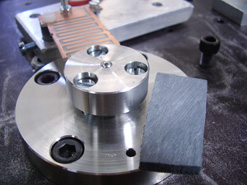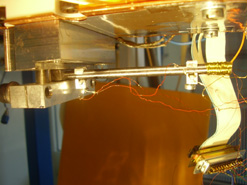 |
||
|---|---|---|
|
|
Dr.Gianpietro Cagnoli |
|
 |
Detection of Gravitational
Waves Some scientists are expert of making instruments that allow us to see distant objects, others make machines that catch tiny particles and other again are measuring effects extremely weak. My job is keeping an object at rest as much as possible. This awkward mission is relevant every time an experiment requires an extremely precise reference system to study a phenomenon. Such is the case of the detection of Gravitational Waves. These waves emitted by high energetic processes in the Universe, produce a displacement extremely small on objects on Earth (about 10-19 m or less). The detection of this displacement is relevant to Astronomers because GW carry exclusive information about their sources (neutron stars, black holes, compact object binaries and cosmology). Colleagues of mine work on the construction of suspension systems that have to filter out the effect of the micro seismic motion. What I have to do is to make the thermal noise as less effecting as possible. To do that mechanical losses in materials have to be minimized and/or the relevant parts have to be shaped in a particular way. |
|
GeNS Measurements of very low mechanical losses in materials are difficult because the suspension system used to hold the sample easily introduces an excess loss that sometimes is much higher than the material one under measurement. The suspension developed in Firenze belongs to the class of systems known as nodal suspensions. Kenji Numata developed such a system for Q measurements in cylinders: two ruby balls, touching the flat surfaces in their centre, hold the sample on nodal points of several resonant modes (Numata's thesis). Our system has just one ball because the sample rests in equilibrium. Such condition is achieved if the diameter of the sphere is greater than the thickness of the disk. Because the pressure of the sphere is minimal (depends on the sample own weight) the contact surface is of the order of tens of microns. Moreover just one surface is touched and the sample wobble on the sphere; for these reasons this suspension has been called Gentle Nodal Suspension (GeNS). |
|
|
 |
||
Thermal Conductivity Measurements One of the most promising materials for test masses and suspensions in cryogenic GW detectors is silicon. |
|
|
|
page last updated: 02/02/2019 |
||

